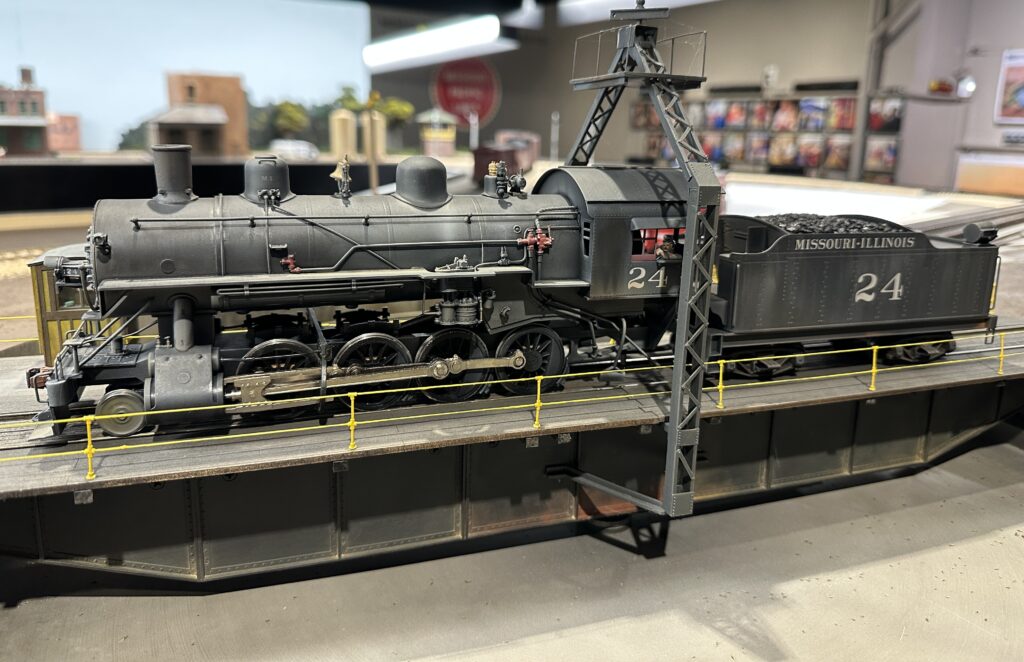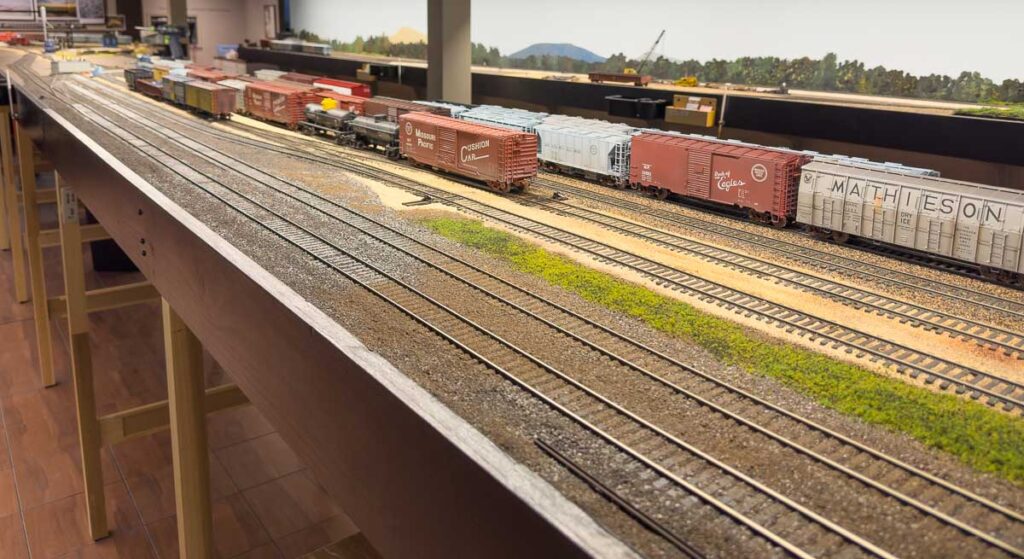Prototype…
A bridge over the Mississippi River was never built at Ste Genevieve. Therefore, when the Illinois Southern Railway wanted to move rail traffic westward to Bismarck, MO, the sole option was to route trains through the congested traffic of East St Louis, over the river and then through St Louis. This slowed deliveries down considerably, so the IS Rwy opted for a railcar ferry across the river from Kellogg, Illinois, to a point just north of Ste Genevieve called Little Rock Landing (named after a prominent rock outcropping into the river). The IS Rwy drove the first spike into the track leading to the incline in 1901.
Tucked into a small valley, a wye was used to turn engines. An engine house was built, along with coal and cinder facilities, as well as a small yard and water tower. Traffic sped through to Bismarck and the railcar ferry operation saw increasing amounts of traffic, requiring ever larger barges and ferries.
Within a few years, the St. Louis-San Francisco Railroad (SLSF or Frisco) ran its River sub mainline across the IS tracks. An interlock tower protected the trains at grade level and since the IS was there first, it became the senior line.
In 1918 disaster struck when a ferry loaded with cars sank in the river. This ultimately ended the IS Rwy; when the M-I was constituted with IS assets, a new boat was ordered: a 286′ long steel-hulled, side wheeler named the SS Ste. Genevieve.
Once MoPac assumed control of the M-I, Little Rock Landing was renamed due to confusion with Little Rock, Arkansas, an important point on the MoPac. The new name honored F.J. Thomure, an M-I executive (from the MR&BT side). To this day, many folks in Ste Genevieve still refer to this area as “Little Rock”.
In the early years, two crews worked in tandem to service the boat at Thomure. Eventually, the incline was reduced to a single track with a single crew working the boat. Cars were pulled from the boat’s center track first to minimize the risk of capsizing. That load of cars was moved to the boat yard and a cut of northbound cars were shoved onto the same track. This process of “one cut off, one cut on” lessened the frequency of moving the boat. Only after one track was completely serviced with removal and reloading of cars, did the boat disconnect from the incline’s apron and re-position to service the next track.
The boat’s pilot, Captain Harry “Gunnie” Grieshaber, was an expert veteran of the Mississippi River, having worked it his entire life. The Mississippi’s strong current made positioning and alignment difficult. In pictures, one can see how the port engine steams hard to keep the boat aligned whilst being unloaded.
After the boat’s full load of 18 cars was removed, the SS Ste. Genevieve steamed across the river to repeat the process in Kellogg, Illinois. While the boat was en-route, the train crew ran the inbound cars down to Middle Yard, where they would exchange them for another 18 car cut bound for Illinois.
A typical day started at 7:00 am and the boat made five trips daily each way across the river. The Thomure-Kellogg roundtrip lasted about 90 minutes, including working all three boat tracks. Peak transfer was 200 cars daily.
The SS Ste Genevieve overnighted in Thomure with crews working 6 days a week, taking Sundays off. As the last cars were pulled from the boat on Saturday, 2 loads of coal would be added, leaving one on each outer track next to the boiler doors for unloading. A skeleton crew arrived Sunday to hand shovel the coal into the boat’s bunkers.
Ferry operations ceased in 1961 when trains were re-routed onto Missouri Pacific tracks southward through Illinois, crossing the river below Cape Girardeau. The trains would then run northward to Ste Genevieve over the Frisco right-of-way.

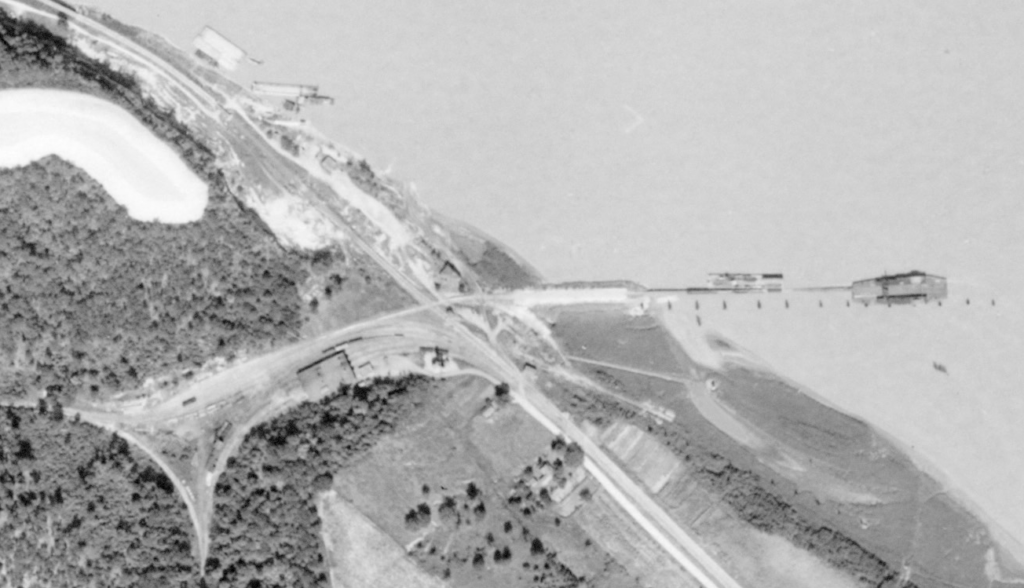





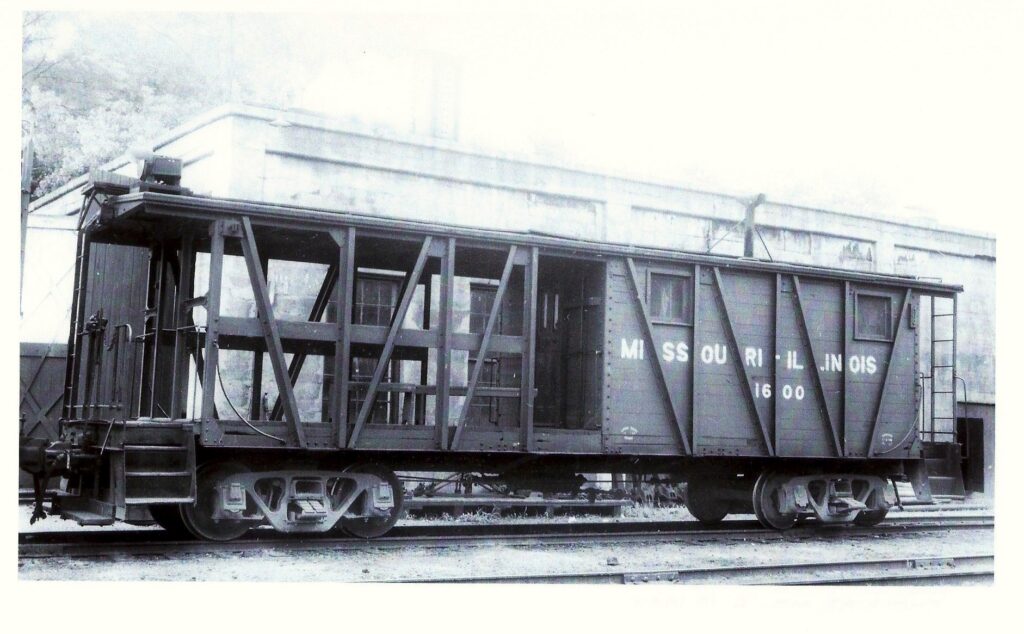

Layout adaptation…
At 1:48, the 286′ long SS Ste Genevieve would scale to nearly 72″ in length. A shortage of space reduced this to a manageable 52″ long by 20″ wide. Although shorter, the 3 parallel tracks remain, each holding 4 typical freight cars (40′) for a total of 12 cars per trip.

Like the prototype, the incline trackage crosses the mainline at the top of the incline. However, do not expect to see Frisco traffic here – modeler’s license is exercised and the crossing is the M-I main out of Ste. Genevieve. Similar to the prototype, the crossing is protected by an interlock and a tower. The incline track maintains senior line status and all cross-traffic must stop and phone the tower operator to request clear passage.
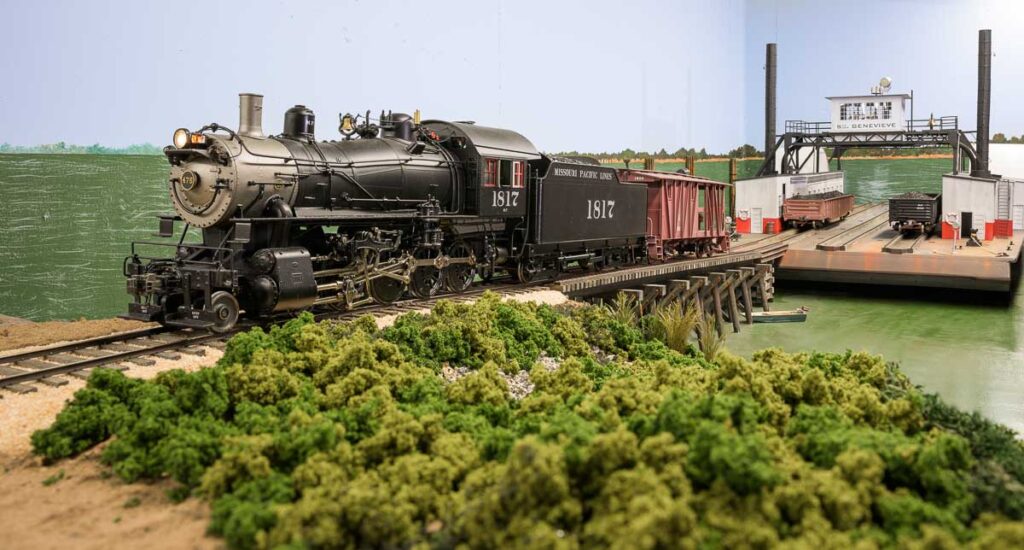
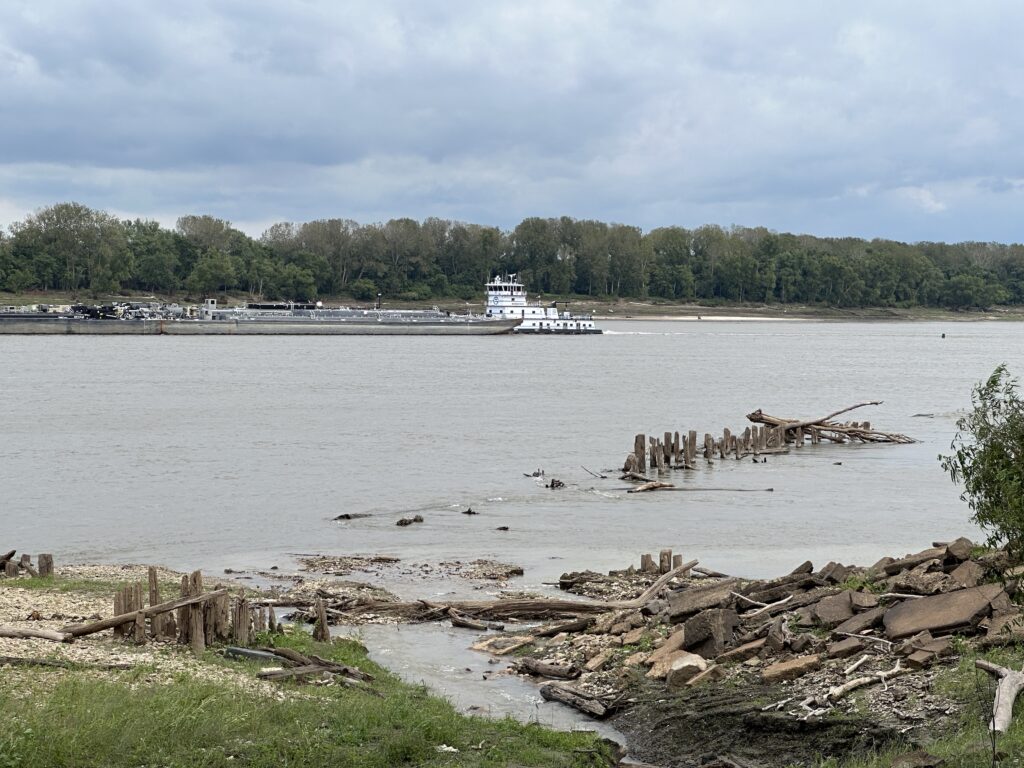
Engine service and storage is also at Thomure. A Dennis Brennan 3-stall roundhouse will provide storage and repairs, while a 24″ Millhouse River Studio turntable is used to turn engines when needed [this may eventually be eliminated since we have not yet needed to turn an engine <g>]. Diesel fuel, sand, coal and water are available on the service lead.
